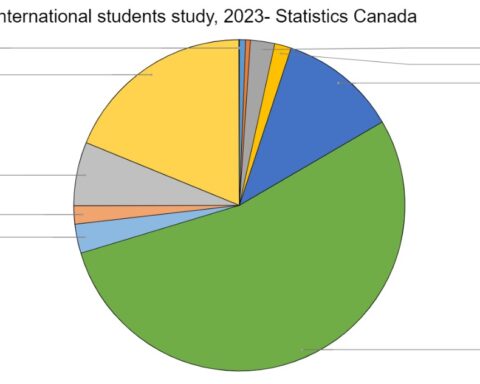Much of the commentary following the release of the National Household Survey on May 8 may have missed the point: that Canada’s population today is very different from 50 years ago. And, unless there are dramatic changes in the way we select newcomers in the next little while, we will continue to evolve from a nation with European forebears to one that draws its immigrants from all over the world – a majority of Asian heritage.
Here’s a telling statistic: 22 per cent of our population are first-generation Canadians, 17.4 per cent are second-generation and 60.7 per cent of us are either third generation or have been here longer. The majority of first-generation Canadians reported their ethnicities as Chinese, East Indian (from India) and English. The second generation are mainly English, Canadian and Scottish, while the third generation and beyond are Canadian, English and French.
The profile of first and second-generation Canadians gives us a good sense of where we are heading. The trend line has been consistent, as captured in this NHS finding –
- The share of “visible minorities” has increased among immigrants who came in the more recent decades. The 2011 NHS data showed that visible minorities accounted for 78 per cent of the immigrants who arrived between 2006 and 2011, 76.7 per cent of those who arrived in the previous five-year period and 74.8 per cent of immigrants who arrived in the 1990s.
- In contrast, visible minorities made up only 12.4 per cent of immigrants who arrived before 1971.
Overall, “visible minorities” comprise 19.1 per cent of the total population, a third of whom are born in Canada. Further, three in 10 of second-generation Canadians are “visible minorities.” This is the generation that is a crossover between the Canada we know and the Canada that we will hand over to our children. Some of this is fairly obvious, especially if you ride transit in Toronto, Vancouver, Montreal, Calgary or Ottawa-Gatineau (in descending order).
These numbers have implications. They suggest it may be time to move beyond mantras like “multiculturalism,” “diversity” and “inclusiveness” to make them more meaningful to newcomers. It may also be a good time to re-examine our use of the term “visible minority,” acknowledging this new reality. Unless the recent changes in immigration policy that place a greater emphasis on language ability (English or French) causes big reversals in the countries and regions from which we draw our immigrants, we will soon be a nation inhabited largely by “visible minorities.”
The Canadian complexity
Among G8 nations, we have the highest foreign-born population. Only Australia has a higher proportion of immigrants, at 26.8 per cent (2010 figures). And, the immigrants to Canada come from 200 different countries and report an even higher number of mother tongues. To wit –
- More than 200 ethnic origins were reported by respondents to the NHS. In 2011, 57.9 per cent of the population reported one ethnic origin and the rest, 42.1 per cent, reported more than one origin; and
- 72.8 per cent of the immigrant population reported a mother tongue other than English or French.
This makes Canada one of the most multicultural, multi-ethnic and polyglot nations on earth. We are redefining old concepts of nationhood. But, what does this mean for our policy of “multiculturalism” and “bilingualism”? The fact is that these touchstones were invented and designed for another era – when we drew most of our immigrants from the European continent and Canada was not a microcosm of virtually every race and ethnicity in the world. We are today a nation of 200+ mother tongues and our citizens come from 200 different nations.
Language skills
Lastly, these two statistics –
- 6.5 per cent of all immigrants reported that they did not know either official language in 2011.
- Among the recent immigrants who came to Canada between 2006 and 2011, nine per cent were able to converse only in non-official language(s).
These numbers tend to debunk a common explanation for joblessness and under-employment among recent immigrants: that their poor language skills account for their lack of economic integration. Considering that about 14 per cent of our annual intake of immigrants are refugees or cases of compassion (36,178 in 2011) – people who don’t quite fulfill the fluency criteria required of economic migrants – this low percentage suggests language is not as much of a problem as policy-makers crack it up to be.
The National Household Survey portrays an evolving nation that is being remade with every new wave of newcomers. They come to a nation with great institutions, including Statistics Canada, which spent a reported $652 million in providing Canadians with an accurate snapshot of who we are. The nations immigrants come from often have poor policy-making capacity, partly because they lack the resources to undertake the kind of surveys and data collection that we in Canada take for granted.
Rather than focus on the shortcomings of survey methodology, we should be discussing how these latest numbers can inform our way forward as a nation. Unless you are a professional statistician like Munir Sheikh, the numbers should be good enough to foster a national conversation around the big-picture demographic changes that are happening right in front of our eyes.
The NHS should remind all Canadians that this nation is changing; that the Canada of tomorrow will be very different from the Canada of today. – New Canadian Media




